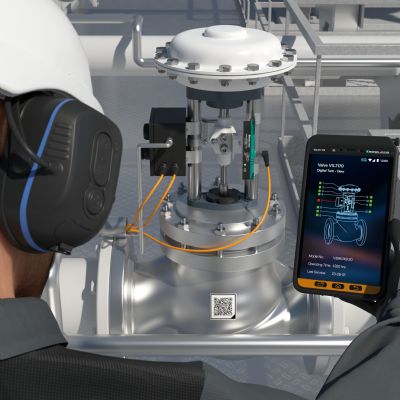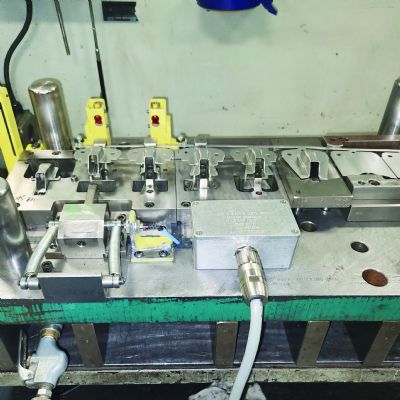Improved Communication Eases Line Operation
A common communication path enables smart components in a press line to talk to each other and brings individual-machine and all-line data to a central location. This generates more information that can be analyzed and acted upon.
“While electronics providers have specific protocols to communicate among their own devices, Ethernet is the common protocol now,” says Heitbrink. “With Ethernet, no matter the piece of hardware, we have a common base upon which to communicate information between processors. So a modern line gathers and displays information, communicates with devices all along the line, and commands those devices and components to do things just as if operators were standing in front of all of them.”
“Today,” Heitbrink says, “an operator can start and stop line functions or change modes on various components without traveling to each piece of equipment, say taking a hundred steps down a long press line to start a straightener and a coil reel and then returning to the main press panel for something else. An operator now can do everything from a single location.”
Such connectivity also assists should equipment or lines fail or run sub-optimally. With so much information available, remote monitoring and diagnostics become orders-of-magnitude more efficient—no need to wait for technicians to arrive and perform lengthy troubleshooting procedures.
GIGO Still Applies
But even with all of the advantages of big data, there are caveats, Heitbrink warns. Besides the need to accurately process data to arrive at informed, correct decisions, data-gathering itself presents challenges, he says. For example, the ability to tie the equipment to the production people so that they can analyze uptime and downtime has advantages, but is limited by the accuracy of inputs.
“Someone may sit at a desk and monitor a machine or a line, and from the information inputs determine why it is or isn’t running efficiently or properly,” Heitbrink notes. “Operators still may be required to enter in that vital information. It’s the old ‘garbage-in, garbage-out’ adage. For a good analysis of what is happening on that line, good information must be entered. It may be that some operators are less efficient, take longer to set up equipment or change tooling and coils, or take longer lunch breaks.”
As long as humans are part of the equation, they’ll need to be skilled and they’ll need to be trained. And, if so, Industry 4.0 offers limitless possibilities for productivity improvement.
“Simply put,” concludes Heitbrink, “these data advancements allow you to optimize what you do.” MF
See also: Nidec Press & Automation
Technologies: Sensing/Electronics/IOT, Stamping Presses











 Podcast
Podcast
